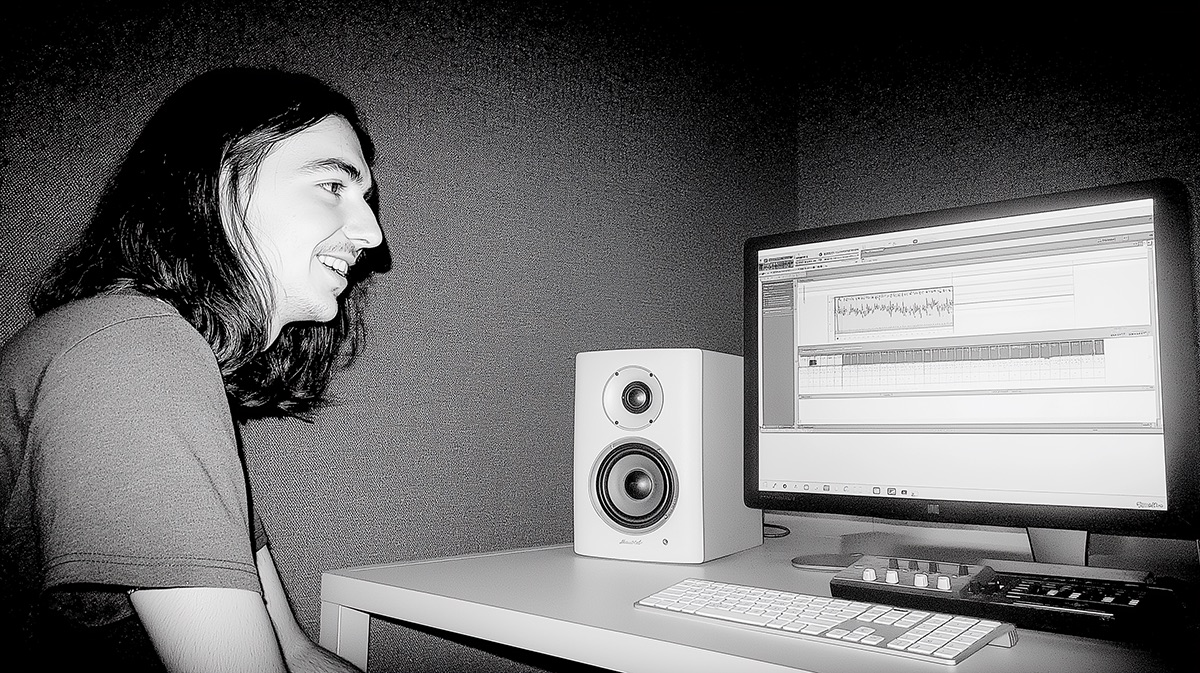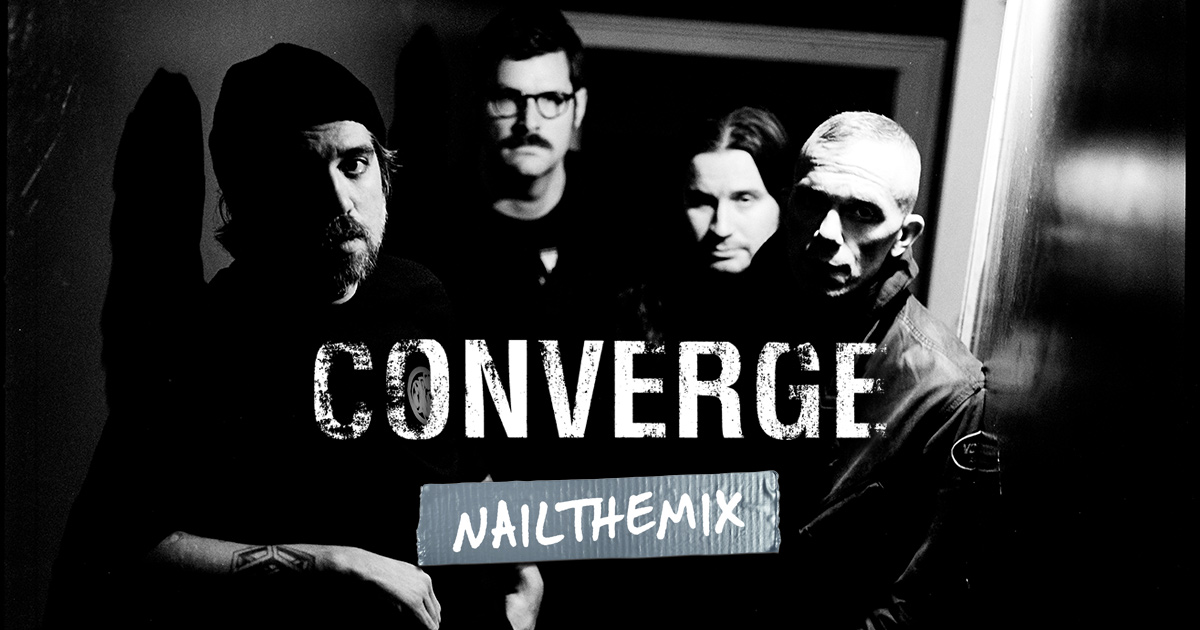
How to Fix Noise Floor Issues in Metal Production
Nail The Mix Staff
You’ve spent hours dialing in a crushing guitar tone. The gain is cranked on your 5150 or your favorite Neural DSP plugin, the chugs are hitting hard, and it sounds absolutely lethal. But then you stop playing. And instead of silence, you get a tidal wave of HISSSSSSS.
That, my friend, is the noise floor rearing its ugly head.
For metal producers, the noise floor isn’t just some nerdy technical term; it’s a constant enemy in the battle for tight, clean, and aggressive mixes. It’s the gunk that turns tight staccato riffs into a fuzzy mess and makes your quiet atmospheric intros sound like you recorded them next to a waterfall.
Let’s break down what the noise floor is and, more importantly, how to slam the door on it for good.
What Is the Noise Floor, Really?
In simple terms, the noise floor is the baseline level of hiss, hum, and electrical noise that’s inherent in your recording chain. Even with nothing plugged in, your audio interface’s preamps have a tiny bit of self-noise. Your cables, your pedals, your guitar’s electronics—they all contribute.
In a perfect digital world, silence would be absolute zero. But in our world of analog gear, tubes, and gain-cranked plugins, we’re always fighting against this low-level noise. And in metal, we make it way, way worse.
Why High-Gain Metal Is a Noise Floor Nightmare
Cranking the gain doesn’t just make your signal louder; it makes everything louder, including that quiet bed of hiss. A tone with 6dB of gain will have a certain noise level. A face-melting metal tone with 60dB of gain will have a noise floor that’s astronomically higher.
This is the central problem for metal guitarists and producers.
The Source of the Sickness: Your Signal Chain
The noise isn't just coming from your amp sim. It's a cumulative problem that starts right at your guitar.
- Pickups: Single-coil pickups are notoriously noisy and susceptible to 60-cycle hum. Humbuckers were literally invented to "buck the hum," making them the standard for metal for a reason. But even they aren't perfectly silent.
- Pedals: Your pedalboard can be a minefield. That vintage distortion pedal you love? Probably noisy. A cheap power supply? It’s injecting noise into every pedal it touches. A high-quality, isolated power supply like a Voodoo Lab Pedal Power or a Cioks DC7 is a non-negotiable investment.
- Cables: Old, cheap, or poorly shielded cables act like antennas for interference. Don't skimp here.
- Interface Preamps: Cranking the preamp on your Focusrite Scarlett or UAD Apollo to its absolute maximum will introduce noise. This is where proper gain staging becomes critical. Record your DIs at a healthy level (peaking around -10dBFS, averaging around -18dBFS) so you don't have to push the preamp into its noisy territory.
Taming the Beast: Your Arsenal Against Noise
Okay, so we know the problem. How do we fix it without wrecking our tone? We use a combination of smart gating, surgical noise reduction, and good old-fashioned editing.
The Workhorse: The Noise Gate
The noise gate is the #1 tool for creating tight, percussive metal rhythms. It works by automatically shutting off the signal when it drops below a certain volume (the threshold). No chugging? No signal. Simple as that.
Our Go-To Gates and Settings
- FabFilter Pro-G: Insanely flexible. The sidechain feature is a lifesaver.
- Fortin Zuul (part of the Fortin Cali Suite or Nameless Suite): It’s literally built for this. It’s incredibly transparent and easy to dial in for tight rhythms.
- Your DAW's Stock Gate: Don't sleep on it! The stock expander/gate in Pro Tools, Logic, or Reaper is more than capable.
Actionable Settings for Metal Guitars
- Threshold: Set this so the gate opens instantly when you play a note but closes firmly on the space between notes. Watch your meters. If the noise between chugs is at -60dB, set your threshold a little higher, like -55dB.
- Attack: Set this as fast as possible without getting an annoying "click." A setting of 0.1ms to 1ms is a good starting point. You want the gate to open the instant the pick hits the string.
- Release/Hold: This is crucial. Too fast a release and you'll chop off the natural decay of your notes. Too slow and you'll let noise bleed through. A
Holdsetting of 10-20ms can help, followed by a relatively fastReleaseof 50-150ms. Tweak it until the gaps between riffs are silent but the ends of your notes don't sound unnaturally cut off. - Pro Tip: Sidechaining with the DI: For the ultimate clean gating, put the gate on your processed amp track, but key its input from your raw DI track. The DI has a super-clean, dynamic transient, which tells the gate to open and close with perfect accuracy, ignoring any sustain or fuzz from the amp tone itself.
The Surgeon: Noise Reduction Plugins
Sometimes a gate is too blunt. For a noisy vocal track, a bass DI with a lot of hum, or the trail of a guitar solo, a gate will just sound choppy. That’s when you need an intelligent noise reduction plugin.
These tools, like iZotope RX’s Voice De-noise or Guitar De-noise, don’t just duck the volume. They use smart algorithms to identify the constant "fingerprint" of the noise (the hiss or hum) and surgically remove it from the entire signal, even when you're playing.
Use these sparingly. A little goes a long way. Pushing them too hard can create weird digital artifacts. But for cleaning up a source track before it hits your compressors and other processors, they are indispensable. This is a much better approach than trying to use a simple EQ to notch out hiss, though some high-end fizz can be tackled with smart EQ.
The Sledgehammer: Compression’s Role in Noise
So you’ve cleaned up your source tracks. Awesome. But the danger isn’t over. Remember how we said gain makes noise louder? Well, so does compression, especially the heavy-handed kind we love in metal.
A compressor works by reducing the dynamic range—making loud parts quieter and quiet parts louder. That "quiet part" includes your noise floor. When you slam a drum bus or a vocal with a compressor like an Empirical Labs Distressor or a Slate Digital VBC, listen to the track's tail or fade-out. You'll hear the compressor "breathing" and pulling up all that residual noise floor from every single track.
This is why cleaning up your sources is so critical. A clean track going into a compressor will result in a clean track coming out. A noisy track will become a mess. To master the art of aggressive yet clean dynamics, understanding metal compression is key, and it goes beyond just making things loud.
The Final Polish: Editing and Automation
The ultimate pro move? Get your hands dirty.
Zoom in on your audio waveforms. See that little bit of hiss before the vocalist comes in? Delete it. The amp noise in the two-second gap between riffs? Cut it out and add a tiny fade.
Automating the master fader to fade to absolute black at the end of a song is a classic trick to ensure a perfectly clean and impactful ending, free of any cumulative hiss from your dozens of tracks. It’s tedious, but it’s what separates a good mix from a great one.
Learn from the People Who Mix Your Favorite Records
Taming the noise floor is a fundamental skill. It’s about gain staging, gating, surgical editing, and knowing how your processors will affect the final result. You can read about it all day, but seeing it in action is a game-changer.
Imagine watching producers like Joey Sturgis, Will Putney, or Jens Bogren tackle these exact problems on real multitracks from bands like Spiritbox and Gojira. They show you not just what gate they use, but why they set the release to 87ms. They explain why they automate a fade instead of just cutting a region.
This is exactly what we do at Nail The Mix. We give you the multitracks and let you be a fly on the wall as the world's best metal producers mix them from scratch, explaining every single decision. If you're ready to go beyond presets and truly unlock your sound by mixing modern metal, this is how you do it.
Get a new set of multi-tracks every month from a world-class artist, a livestream with the producer who mixed it, 100+ tutorials, our exclusive plugins and more
Get Started for $1






